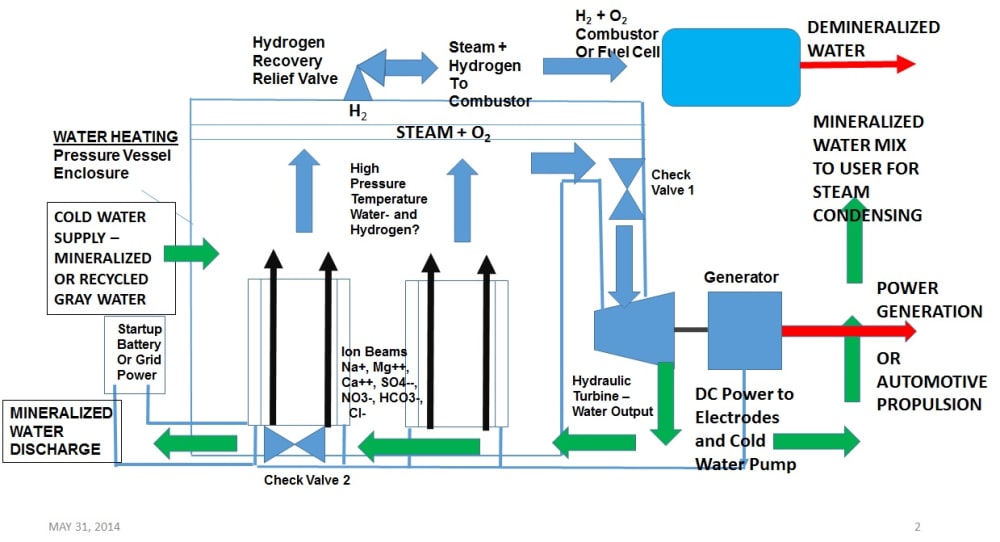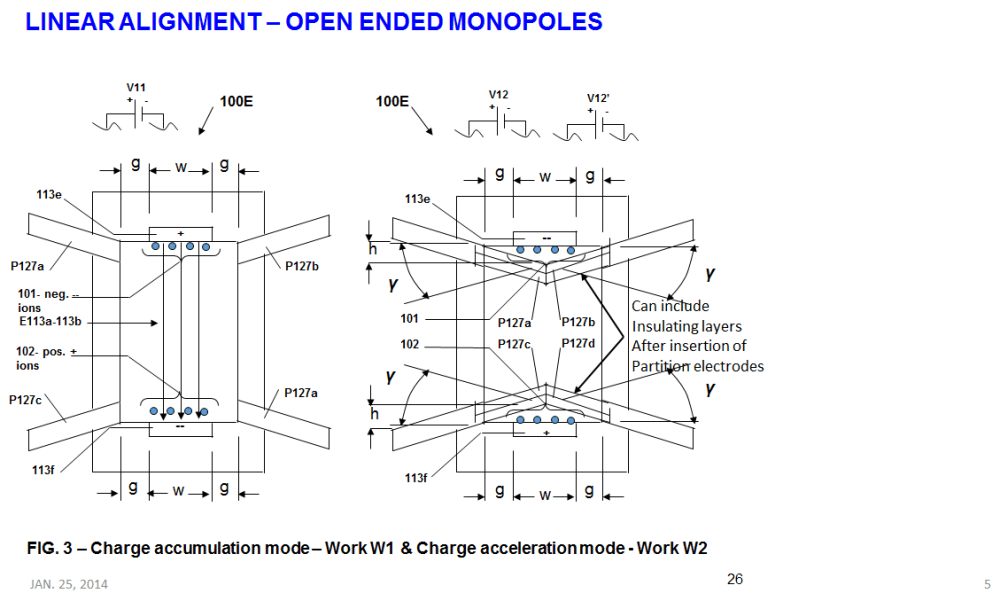SOLUTE ION LINEAR ALIGNMENT PROPULSION/ACCELERATION to RAPIDLY produce energy in solution of water via flash distillation heat generation for heating of an aqueous solution such as sea water. The flash distillation could be continued until the solution becomes saturated brine and precipitation can be initiated on a continuous basis. The steam created by the flash distillation is therefore purified water when condensed. The steam can be used to drive a steam turbine-generator providing power for the process and also to external loads. In addition, the process can be adapted as a self-powered automotive engine. See FIG. 1.
See FIG. 2 - The power for the flash distillation is derived by the linear alignment process which enables conversion of the potential energy from the electrostatic fields of the solute ions into kinetic energy. It is proposed that this is a net energy gain or power generation process which derives energy from the electrostatic fields of the solute ions themselves. Therefore, this process should be the cheapest, cleanest method of generating electrical power available while simultaneously providing fresh water due to the flash distillation thereby solving both the pollution, energy and drought problems enabling fresh or sea water to be pumped inland to agricultural regions from the world’s coastlines.
o See FIG. 2 - Process Scheme is as follows:
1. CHARGE ACCUMULATION: Perform conventional capacitive deionization on the solution, using, for example, the electrode assembly 100E shown in FIG. 6 (FIG. 29) with the partitions P127a, 127b, 127c and 127d in the open position. The applied voltage should be in the range of about 1.5 VDC. The electrodes may be made of carbon aerogel or nanofoam. However, alternate corrosion resistant materials may be substituted such as graphene
http://www.graphene-info.com/companies
(TDA Research using high purity sugar-based carbon reports capacities of about 45 Farads/cm3 with surface areas in the range of 1400 m2/ g.
See: http://www.tda.com/Library/docs/Dietz%20DL%202009%20v10.pdf )
2. CHARGE ISOLATION: As shown in FIG. 2, close the partitions P127a, 127b, 127c and 127d.
3. CHARGE ACCELERATION: Apply a transverse (longitudinal) electric field causing the ions to accelerate due to linear alignment of the Coulomb forces.
Related material:
a) ASME ES2010-90396 "Solute Ion Coulomb Force Monopole Motor and
Solute Ion Linear Alignment Propulsion" - Peer-reviewed technical paper
presented on May 19, 2010 at the ASME 4th International Conference on Energy
Sustainability in Phoenix, Arizona.
b) SPESIF 2012 "Dielectric Analysis for Torque of Solute Ion Coulomb Force Monopole Motor" Peer reviewed technical paper submitted for Space, Propulsion and Energy Science
International Forum 2012 and Conference on Future Energy 5 held 29 February-2
March 2012 at the University of Maryland. Elsevier Publication Physics Procedia
38 (2012) 116-135.
c) US Patent Application Publication 2010/0199632
Like this entry?
-
About the Entrant
- Name:Anthony Fresco
- Type of entry:individual
- Patent status:pending








